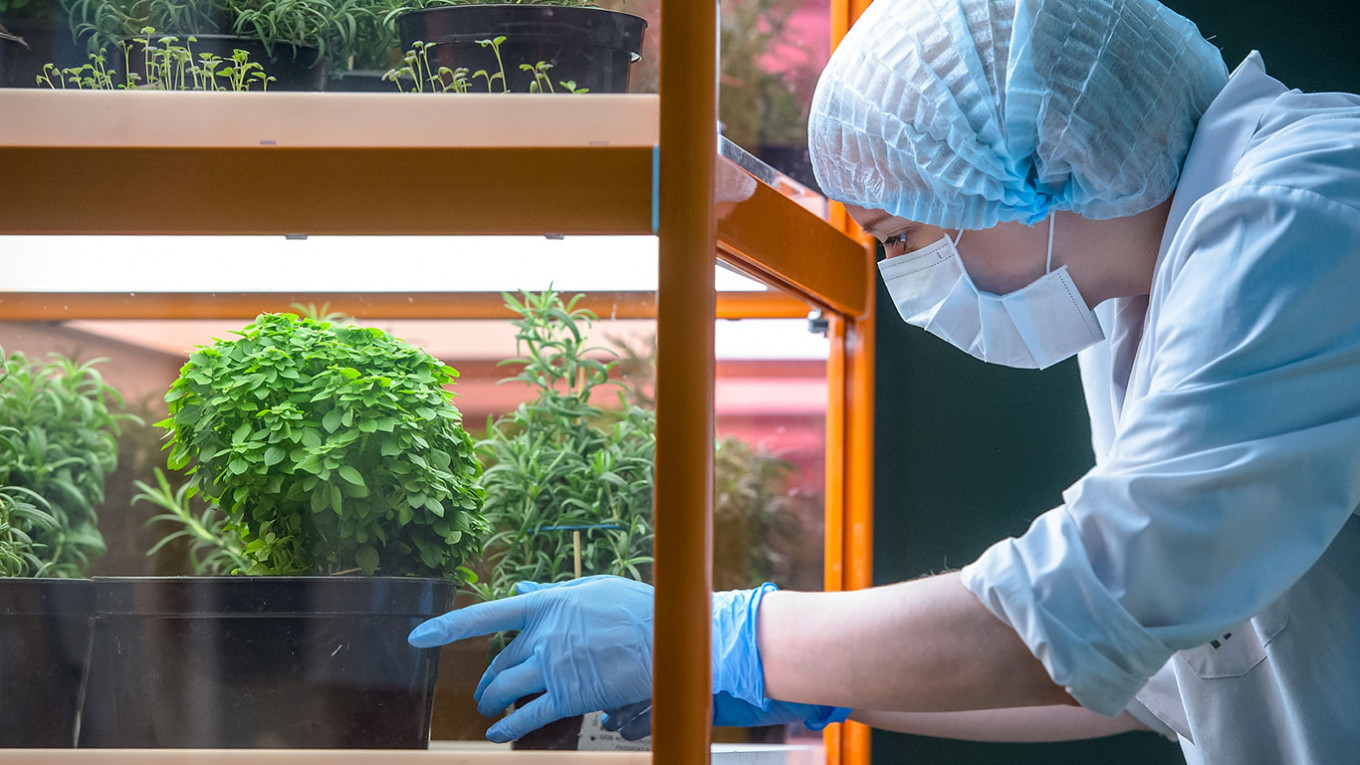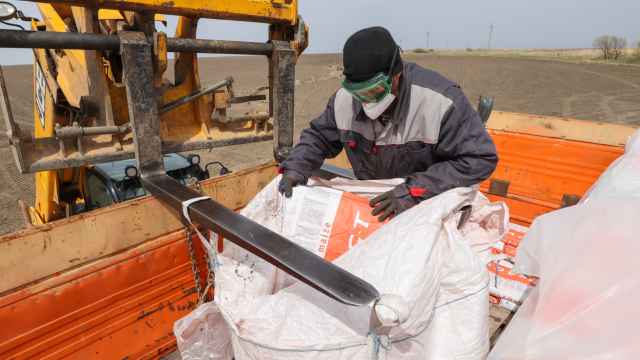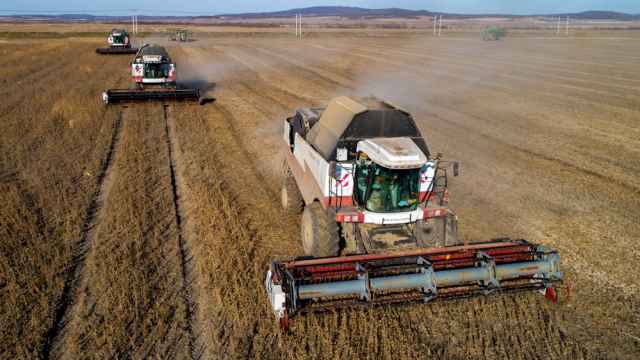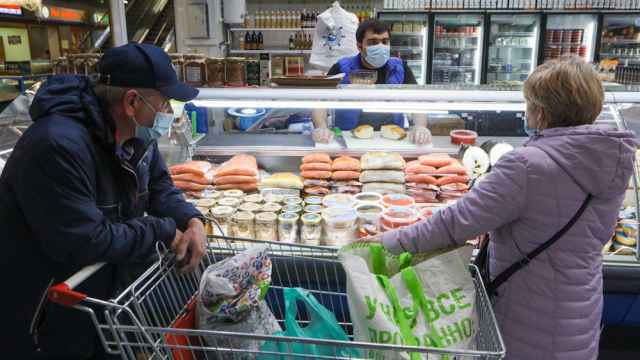If there’s one thing Russia is not short of, it’s land. The world’s largest country is one of its least densely populated, and an agricultural powerhouse.
Building on its historic role as a grain-producing superpower, fresh support from the Kremlin in the form of investments and an embargo on food imports from the EU helped push Russia to a record $30 billion of agricultural exports in 2020 — making it a net seller of food for the first time since the fall of the Soviet Union.
Despite this recent success and the abundance of arable farmland, some see the country as ripe for the introduction of new agricultural technology in the form of vertical farming — indoor industrial greenhouses that are heavy on technology, light on physical space and located close to cities and consumers.
“Vertical farming is one of the most rapidly developing markets in the venture capital space,” said Maya Gorodova, commercial director at iFarm, Russia’s leading vertical farm company. “Over the next five years the industry is only going to accelerate even faster.”
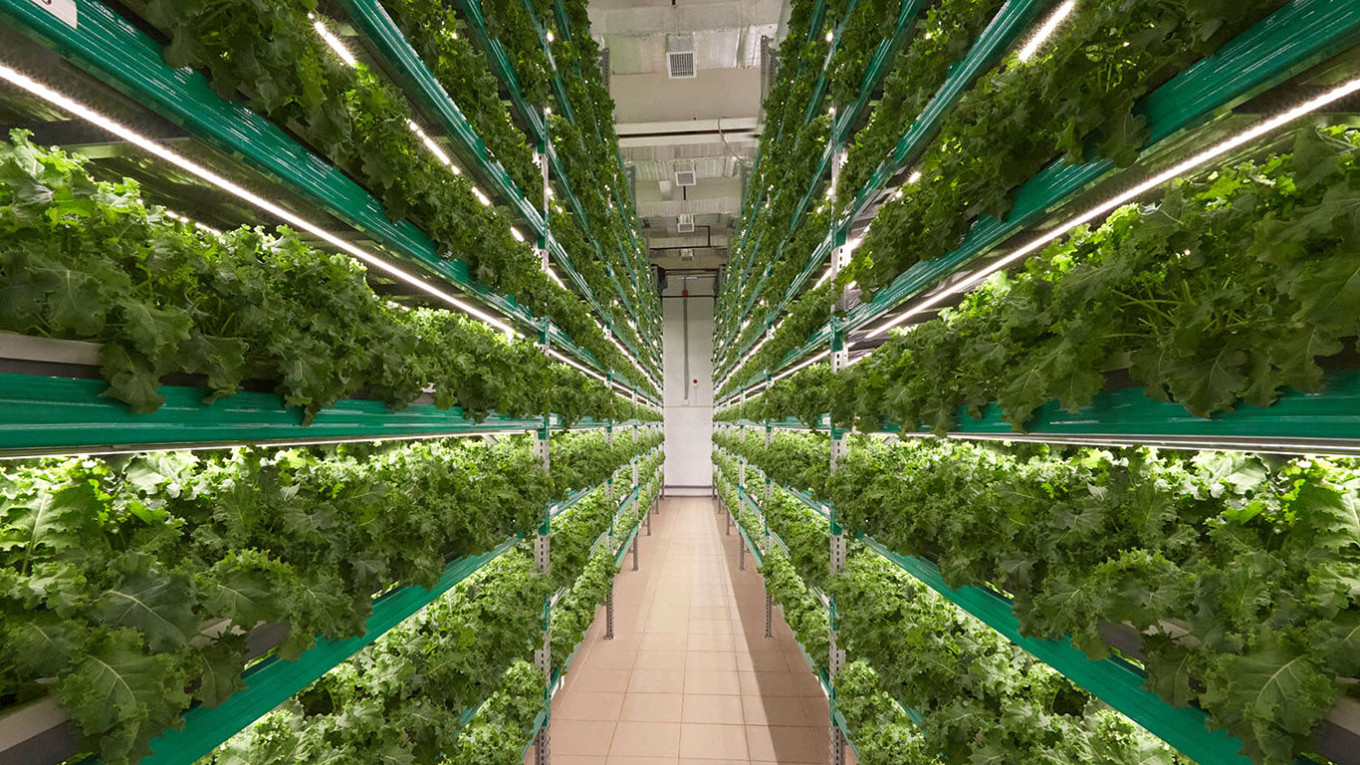
On paper, Russia is hardly fertile ground for vertical farming. The industry — a darling of climate-conscious investors in recent years — is designed to solve the problems of smaller countries and city states. These are places with high consumption, little land or poor climates, not the country with the world’s third-largest arable land area and a well-supported high-performing farming sector.
But Russia’s status as an agricultural superpower belies some weaknesses that have created an opening for the sector and companies like iFarm, said Gorodova in an interview at iFarm’s largest vertical farm on the outskirts of Moscow.
While Russia excels at producing grains and other robust vegetables like potatoes, pumpkins and turnips, it struggles to grow more delicate products like salad leaves and fresh greens.
“In Russia, up to 80% of some of these products are imported. It’s a huge problem — for the whole world — to be reliant on imports. The pandemic really brought this situation to light, especially with all the delivery delays and description to supply chains.”
Vertical farms are designed to solve this problem. Essentially hi-tech, industrial-scale greenhouses, they rely on combining technology with agro-expertise to create and maintain perfect indoor growing conditions — controlling everything from air temperature and humidity to nutrient mix and soil type to maximize yields and provide a predictable supply of product.
Growing shelves are densely packed into mini-warehouses in cities or heavily-populated areas to drastically reduce the space needed to grow as well as the distance — and time — food takes to get from farm to plate.
The idea is to recreate the Mediterranean or Middle Eastern climate where arugula, for instance, thrives, but in the St. Petersburg suburbs or a smoggy Siberian city all year round.
“We have a lot of interest from cities in the North, even in the Arctic Circle, where there is a need for good, nutritious food, especially among people who work in oil production or mining,” Gorodova said.
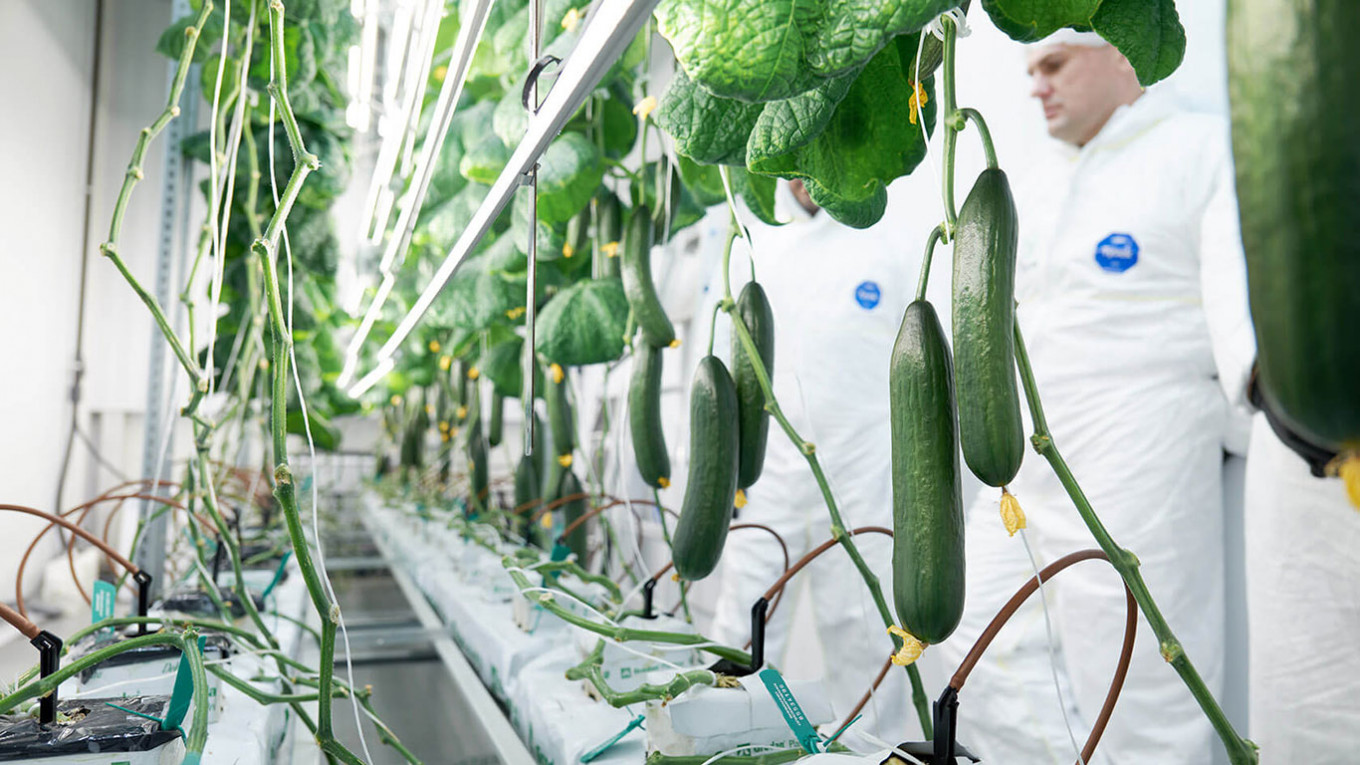
The company touts its success in growing trickier fruits and vegetables as well — including strawberries, tomatoes and cucumbers. The greens grown at iFarm’s Moscow site can be on supermarket shelves an hour after being packed on site, and are still good to eat more than a week later.
This has proven to be a hit among upscale retailers — the only ones with a client base who can pay the higher prices for products produced in a vertical farm. They are enthusiastic about not having to rely on weather conditions or complicated logistics networks to get products into their stores.
“Retailers say it can sometimes be like roulette. They can’t be sure that their deliveries will be on time, or that the quality of the products will always be up to scratch. Even if you’re ordering from the same supplier, delivery times can be different or the product quality can vary.”
“Moreover, a single tomato is traveling thousands of kilometers to get on your plate. It’s absurd.”
Globally, vertical farming presents itself as a green industry — slashing emissions by growing goods close to consumers and reducing the need to move products long distances with high-polluting lorries, planes and ships. Vertical farming also uses no pesticides, limiting the damaging ecological effects of chemical contamination.
But critics have pointed to good marketing when it comes to the industry’s carbon credentials, highlighting that the energy required to grow salad leaves in a light-controlled, temperature-controlled warehouse is many times more than on a traditional farm. That makes the costs much higher than traditional farming and, in places where clean renewable energy — in short supply in hydrocarbon-heavy Russia — cannot be used, it increases the industry’s carbon footprint.
Scalable business
A key part of vertical farming’s attractiveness to startup investors is its scalability.
Rather than just building farms and competing directly with traditional growers, iFarm positions itself as a technology company, as it licenses its software and takes commissions from sales.
The software is patented environmental monitoring tech that contains more than 200 “recipes,” or pre-set programs that monitor and maintain conditions in the vertical farm, tailored to different products. Multiple micro climates can be set up in a single warehouse, allowing lettuce, arugula and pak choi to be grown in the same room, just meters apart.
“We work on the software-as-a-service model,” explains Gorodova. “So we sell the farm and its components and then receive royalties for using the software. We update the software almost every month, with new cultivation recipes, new technologies and new automation systems. The task of our IT specialists and agronomists is to make sure we can get the highest possible yield per square meter.”
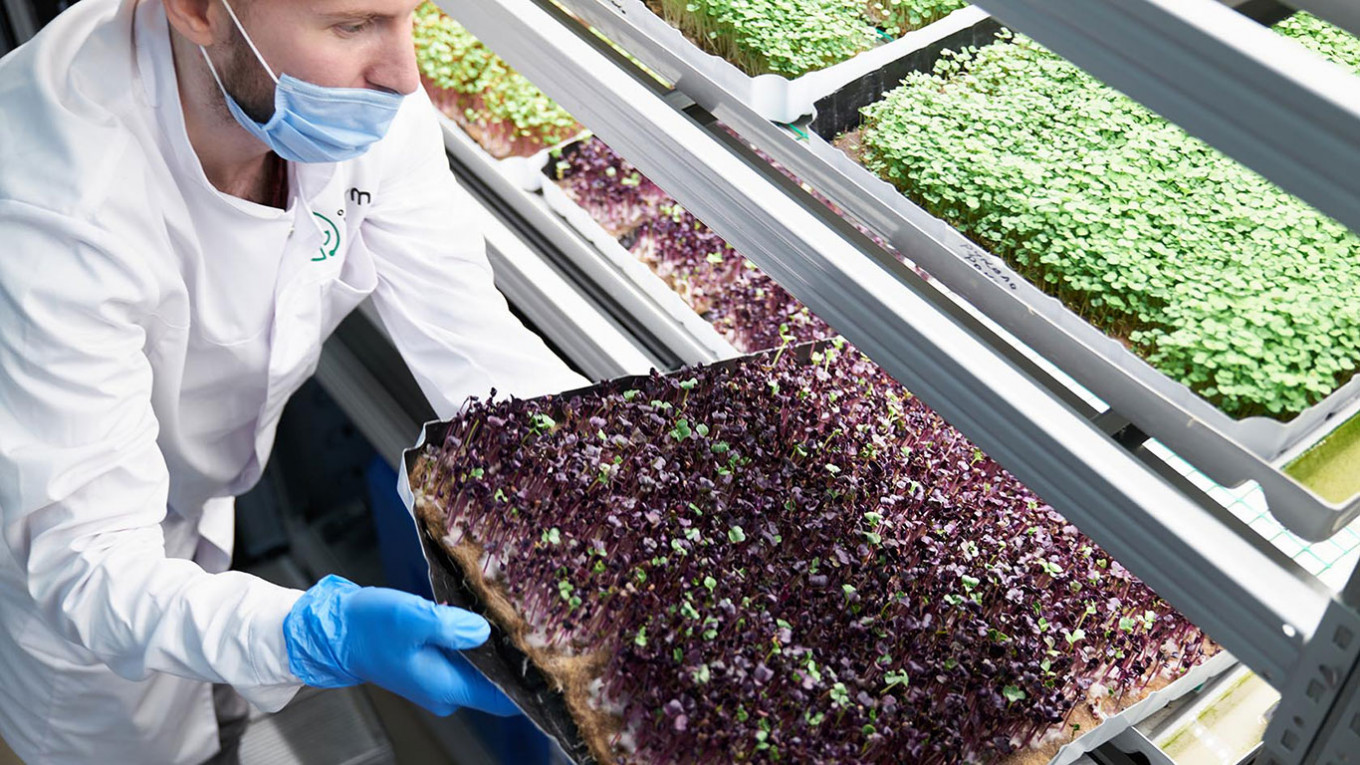
The Russian market for vertical farming is still tiny compared to its European and American peers. iFarm has raised $4 million in funding from investors, while the largest Western firms were planning $1-billion initial public offerings (IPOs) last year.
There are also differences in client mentality and the funding landscape, iFarm executives said.
“Our Russian clients want us to help with sales. They ask if we can introduce them to supermarket chains so that they can sell their products. In Europe, not a single client had questions about sales, they immediately knew how to go about it,” iFarm founder Alexander Lyskovsky said.
“There is no developed funding system in Russia, so Russian clients ask for installments or leasing. Whereas in Europe, they can go to a bank and easily get a loan to build the farm at a 2% interest rate.”
With that in mind, iFarm is internationalizing and crowdfunding. Investors can buy into individual farm projects advertised on the iFarm website, giving them the opportunity to own a share of future profits from a particular site.
The biggest farms are in Russia, for now. But iFarm’s head office is in Finland, and it is planning a new office in Amsterdam. Farms using iFarm tech are being built in Switzerland, Germany, Andorra, Italy, Qatar and the UAE, and the company wants to enter the lucrative British and U.S. markets in 2022, Gorodova told The Moscow Times.
That will require tapping into more investor cash, Gorodova said.
“We have very ambitious plans. Of course, in the long-term, we plan to stage an IPO. Without that it would be impossible to realize those ambitions — hundreds of thousands of square meters of farms, all over the world and in Russia.”
A Message from The Moscow Times:
Dear readers,
We are facing unprecedented challenges. Russia's Prosecutor General's Office has designated The Moscow Times as an "undesirable" organization, criminalizing our work and putting our staff at risk of prosecution. This follows our earlier unjust labeling as a "foreign agent."
These actions are direct attempts to silence independent journalism in Russia. The authorities claim our work "discredits the decisions of the Russian leadership." We see things differently: we strive to provide accurate, unbiased reporting on Russia.
We, the journalists of The Moscow Times, refuse to be silenced. But to continue our work, we need your help.
Your support, no matter how small, makes a world of difference. If you can, please support us monthly starting from just $2. It's quick to set up, and every contribution makes a significant impact.
By supporting The Moscow Times, you're defending open, independent journalism in the face of repression. Thank you for standing with us.
Remind me later.



